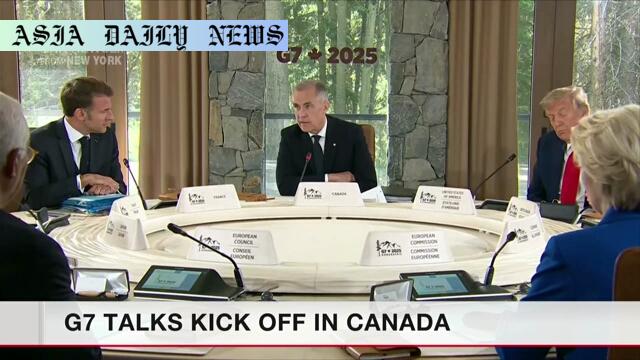G7 Summit: The leaders focus on global economy, tariffs, and security amid looming conflicts.

Introduction: Setting the Stage in the Canadian Rockies
The picturesque setting of the Canadian Rockies became the backdrop for a crucial global meeting this week as leaders from the Group of Seven (G7) convened for their eagerly anticipated summit. Against a backdrop of global uncertainty and regional tensions, Canadian Prime Minister Mark Carney welcomed his counterparts, framing the summit as a “turning point in history.” The focus of discussions reflects the complexities of modern geopolitics, emphasizing economic collaboration, security, and the essence of resilience in an ever-changing world.
The Essence of Resilience: Economic Prosperity and Global Stability
Carney emphasized an undeniable truth: economic prosperity and security are intertwined. The G7 leaders are tasked with tackling a global economic outlook shadowed by uneven recovery and the ever-present uncertainty in world markets. Key among the topics is the discussion of trade policies, particularly US tariff measures that have sparked opinions and debate worldwide. President Donald Trump’s “tariff concept” has often been at odds with collective approaches, adding a dimension of intrigue to the summit’s discourse.
US Leadership and Diverging Visions at the Summit
American influence has always been pivotal in G7 discussions, and this year is no exception. Trump’s meeting with Carney highlights differing perspectives on trade and mutual goals. While Canada underscores collaboration and unity, the US approach has leaned towards protecting national interests through tariffs. Carney’s poignant remark—that the G7 is “nothing without US leadership”—resonates as leaders attempt to bridge gaps and strike a balance between national interests and global cooperation.
Conflict, Security, and Military Reinforcements
Amid intense discussions of economic measures, the topic of global security has also taken center stage. The leaders noted the importance of reinforcing military and security apparatus in light of rising geopolitical tensions, most notably the looming conflict between Israel and Iran. While not directly at the summit’s core, these tensions underscore the necessity of comprehensive strategies to maintain peace and stability in a volatile world.
Outcome Documents Instead of a Communique
In a break from tradition, this year’s G7 will forgo the customary joint communique, opting instead for Canada’s initiative to compile outcome documents dedicated to specific themes. This approach reflects the more fragmented state of global diplomacy, where finding consensus is increasingly challenging. However, it also offers an opportunity to highlight distinct priorities while maintaining focus on actionable outcomes.
Closing Thoughts: A Vision Towards Unity and Resilience
The G7 Summit in Canada epitomizes a complex but necessary engagement of leading economies to navigate through an era of uncertainty. Whether it involves trade, security, or resilience, the summit serves as a reminder of the individual and collective strengths that propel global progress. As this two-day event concludes, the world awaits to see whether compromises and agreements can pave the way for a stronger, more united future.
Commentary
Striking a Balance Between Leadership and Collective Action
The G7 Summit presents a fascinating blend of individual leadership and the pursuit of collective goals. Prime Minister Mark Carney’s emphasis on the interdependence of security and economic resilience underscores the delicate balance world leaders must strike in today’s geopolitical environment. His statements reflect the stark realities of a globalized world, where internal policies have external ramifications and vice versa.
The Tariff Debate and Its Implications
The discussions surrounding US tariffs highlight a core challenge of global trade policy—aligning national economic priorities with international cooperation. President Trump’s “tariff concept” may represent a shift towards protectionist policies, but they also challenge the collaborative essence of institutions like the G7. The success of this summit, in some ways, hinges on finding common ground and mutual understanding, emphasizing that trade policies cannot exist in a vacuum.
The Underlying Theme of Resilience
Perhaps the most poignant takeaway from this summit is the concept of resilience. As Carney noted, it is the crucial link between security and prosperity. In an era marked by rapid change and increasing tension, national and international resilience is not merely an aspiration but a necessity. Leaders’ ability to weave this theme into actionable measures will determine not only the success of the G7 but also the stability of the global order.
Looking Beyond Headlines
While much of the attention on this summit revolves around high-stakes discussions and power dynamics, it’s crucial not to overlook the underlying principles and ideas driving these conversations. The G7 is more than an event—it’s a platform for collaboration, understanding, and compromise. As the summit unfolds, its outcomes will undoubtedly shape the months and years to come.


